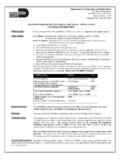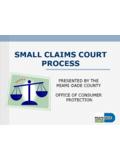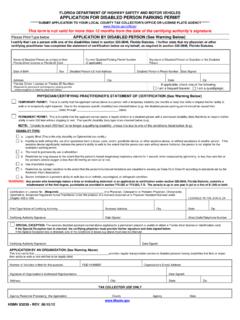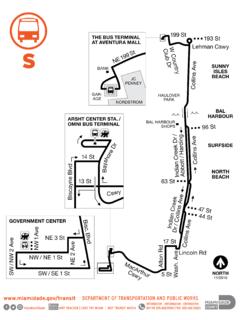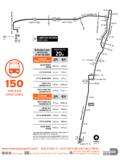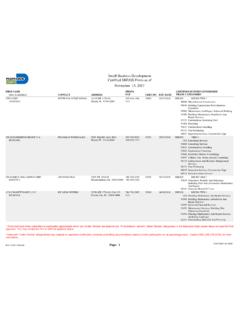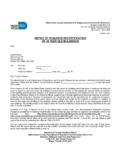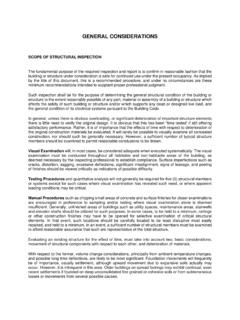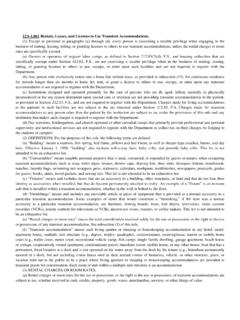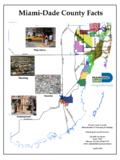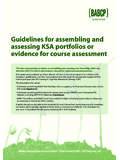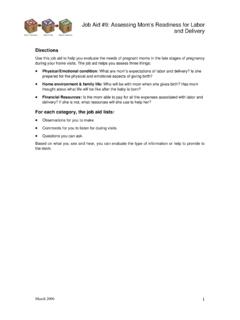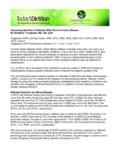Transcription of Assessing Damage ENH1036 and Restoring Trees …
1 Assessing Damage and Restoring Trees after a HurricaneUrban Forest hurricane Recovery ProgramENH1036 Edward F. GilmanMary L. Duryea Eliana Kampf Traci Jo Partin Astrid DelgadoCarol J. LehtolaFunded by the Florida Division of Forestry and the USDA Forest Service, Southern RegionWhat is the urban forest?The urban forest includes all the Trees in a community. Often Trees are planted as individuals in urban environments. However, a healthy urban forest is best managed as an entire forest ecosystem. Trees create shade, which lowers summer temperatures in cities, and reduce storm runoff, which minimizes flooding.
2 When cities manage Trees properly, they can provide additional benefits such as protection from high winds. after a hurricane , communities have the opportunity to rebuild and plan the urban forest so that future storms are less F. Gilman Professor, Environmental Horticulture DepartmentMary L. Duryea Professor, School of Forest Resources and Conservation and Associate Dean for Research, IFASE liana Kampf Urban Forester, School of Forest Resources and ConservationTraci Jo Partin Horticultural Information Specialist, Environmental Horticulture DepartmentAstrid Delgado Urban Forest Landscaping Specialist, School of Forest Resources and ConservationCarol J.
3 Lehtola Associate Professor, Agricultural and Biological Engineering DepartmentA healthy urban forest: Conserves energy and lowers utility bills Increases property values Provides shade and cooling Improves air quality and benefits health Reduces flooding and erosion Mitigates hurricane force winds Key ContentsSafety..2 Follow these guidelines for chain saw safety, staying safe and hiring the right professional during hurricane cleanup. Assessing Damage ..4 Learn to tell the difference between Trees that should be removed and those that may recover. Restoration Pruning.
4 6 Find out how to prune Trees to restore them back to health after a and Pines ..8 Get specialized information for dealing with palms and ..10 Learn how to design and manage urban forests for wind resistance by selecting the right tree and designing the right location. Wind Resistant Species ..12 Find out which tree species can survive hurricanes better. Assessing Damage and Restoring Trees after a HurricaneUrban Forest hurricane Recovery ProgramAfter the devastation of the 2004 and 2005 hurricane seasons, the USDA Forest Service provided grant funds to help communities recover.
5 Urban forest recovery projects have taken several forms, including new tree plantings, inventory and Damage assessment, pruning programs, and replacing invasive plants with more wind resistant team of scientists at the University of Florida/Institute of Food and Agricultural Sciences (UF/IFAS) has been tracking and studying major hurricanes since hurricane Andrew in 1992 to determine their effects on the urban information in this publication was gained from these studies and is part of the Urban Forest hurricane Recovery Program. The main goal of this program is to foster a healthy urban forest that is more wind resistant.
6 It is aimed at citizens and communities who seek to rebuild and set better management practices so that future storms are less :We would like to acknowledge the Florida Division of Forestry and the USDA Forest Service, Southern Region for funding the Urban Forest hurricane Recovery thank the reviewers of this publication for their helpful suggestions: Hallie Dozier, Kevin Eckert, Les Fritz, Steve Graham, C. Way Hoyt, Sharon Lilly, Ed Macie, Charlie Marcus, Mike Marshall, Robert Northrop, Mike Orfanedes, Bruce and Lita Smith, Celeste White, and Larry Broschat provided valuable advice on palms and Kevin Eckert contributed safety photos and advice.
7 Special thanks to Susan Gildersleeve, Tracy D. Zwillinger and Ashley Wood, UF/IFAS Information and Publications Services and Kelly Damage cleanup is extremely dangerous, even for professionals!More safety information is available at the Florida AgSafe web site safety tips Do not work alone. Keep a well stocked first-aid kit nearby and learn how to use it. Avoid overexertion this is the most common cause for injury. Avoid lifting over 50 pounds. Remember to lift with the legs and not the back. Survey the site to identify potential hazards and discuss where there is potential for injuries.
8 Agree on communication signals before you start to work. Set a perimeter around the work area that is two times the height of the tree . More distance is required when felling Trees or dropping limbs. Mark the area with tape or cones and keep non-workers safely outside this a safe work zoneAppoint a flagger or use barricades and warning signs to control traffic or Up after a HurricaneChain saw safetyChain saws are considered the most dangerous hand tool available. The risk of injury increases during hurricane cleanup when chain saws are widely used to remove Trees and branches.
9 Use these guidelines to avoid injuries: Follow manual instructions carefully to ensure safe operation and proper equipment maintenance. Wear the appropriate personal protective equipment. Keep both hands on the handles. Many chain saw injuries affect the hands and are the result of using the saw with just one hand. Cut at waist level or below. Chain saw injuries to the head often result from making overhead cuts. Take extra care when cutting limbs that are bent, twisted, or caught under another object. They may snap back and hit you or pinch the saw. Take the time to do the job right.
10 Most injuries affect the legs and feet and are the result of aggressive or careless cutting. Take breaks when needed, because most injuries occur when workers are fatigued. Shut off equipment when fueling the saw or carrying it a distance of more than 100 feet, or through slippery areas or heavy brush. Be sure the chain saw operator is aware of your presence before you approach. Chain saw operators often cannot see or hear the approach of other people. Do not cut with the upper tip of the chain saw to avoid Protective Equipment: reduces the likelihood of injury by covering key areas of the courtesy of Kevin EckertMost injuries and deaths in a natural disaster occur during cleanup.
